|
敬请期待中文版 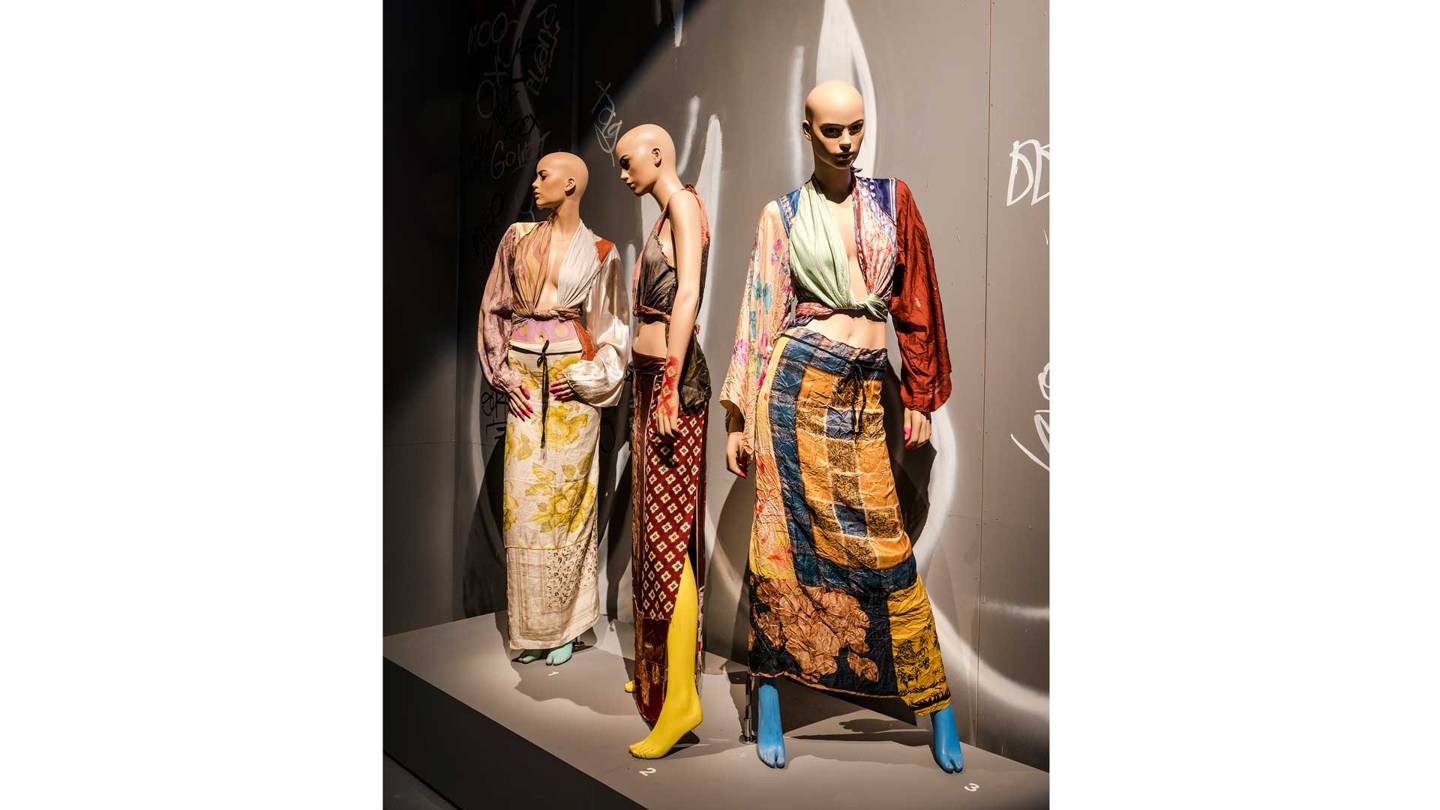 An elegant camel coat is pitted against a white wrap-dress, stained with shocking-pink blotches. The alliance between the noble French house of Hermès and the disruptive Belgian designer Martin Margiela seems an unlikely combination. But in Paris two separate exhibitions are looking at the iconoclast from Antwerp. At the Musée des Arts Décorarifs, newly shortened to MAD, the decision to show Margiela’s work was encouraged by Pierre-Alexis Dumas, Artistic Director of Hermès, and President of the museum. 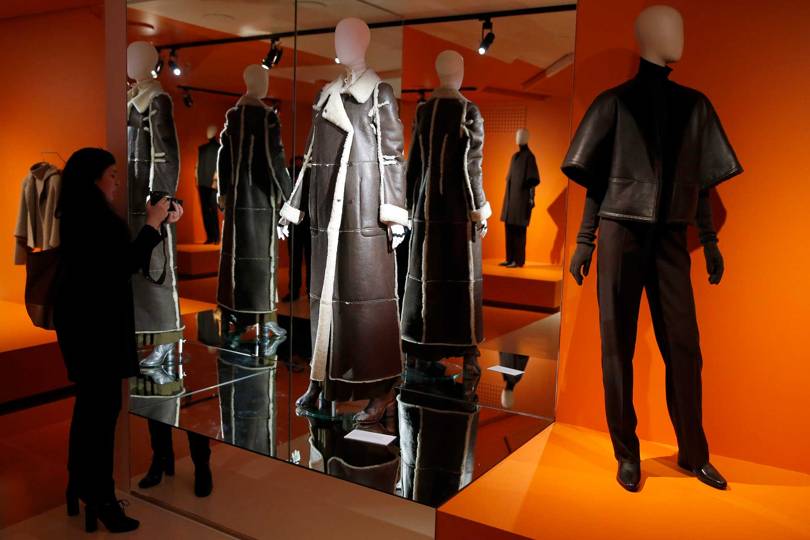 An installation at "Margiela: The Hermès Years" at the Musée des Arts Décoratifs in Paris Getty “We want to make the museum more exciting and appealing, especially for the new generation,” Dumas said, as he stood amid the crowd of visitors looking at the ripe fruit of a six-year design relationship between the noble French house and Margiela, from 1997–2003. The iconoclastic designer, who has never shown his face to the fashion world, is known as the king of the undone and the recycled – and a revelation of what lies beneath. 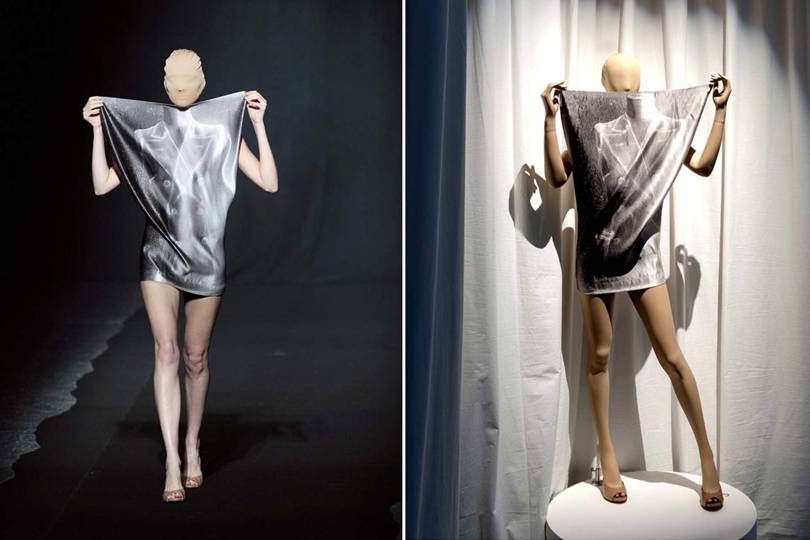 Martin Margiela's "Poster dress" on the runway at his Spring/Summer 2009 collection (left), and on display at the Palais Galliera Getty (left); Palais Galliera (right) His exceptional skills are found in “Margiela: The Hermès Years” which runs at MAD until 2nd September, after transferring from the Mode Museum in Antwerp, Belgium. His talents also tell a fascinating fashion story – especially in relation to a simultaneous Paris exhibition at the Palais Galliera, curated by the “invisible” designer himself. At this exhibition, the 20 years of Margiela under his own label are not only displayed, but each procedure explained by the designer, with the support of the museum and especially its outgoing curator Olivier Saillard. An example of the Belgian designer’s work are the “Tabi” shoe-boots he created with two toes, and a whole collection in 1997 built entirely on his Stockman dressmaker’s dummy. At MAD, the most dramatic effect is the colour, that juicy orange of Hermès shown against the white of Margiela, who painted every item in his studio stark white – from floor to ceiling – and even asked his staff to wear white lab coats. 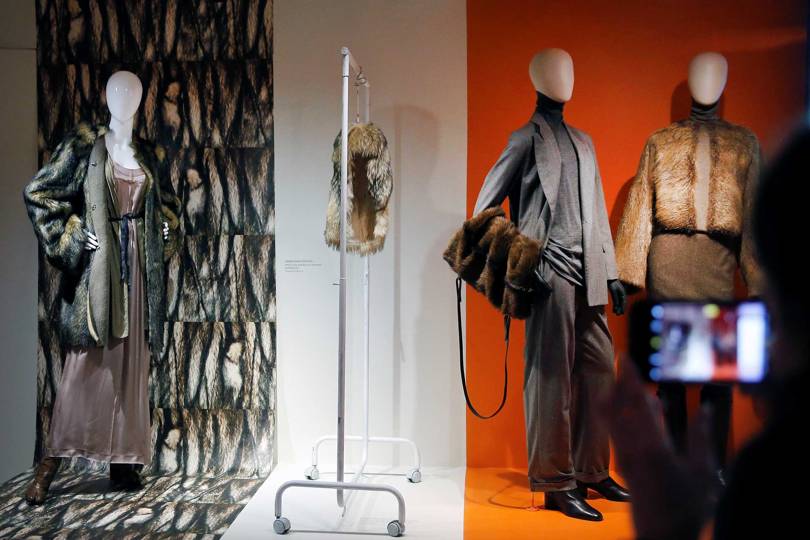 An installation at the exhibition "Margiela: The Hermès Years" at the Musée des Arts Décoratifs in Paris, showcasing the contrasting house colours at Margiela and Hermès Getty But the noble brand and the imaginative designer are not always so far apart. Using the deep “V” neckline of the Vareuse – once a French sailor’s jacket – the designer’s work for Hermès can look streamlined, graceful, and well-suited to the women of a certain age who appear in videos as lively exhibits. 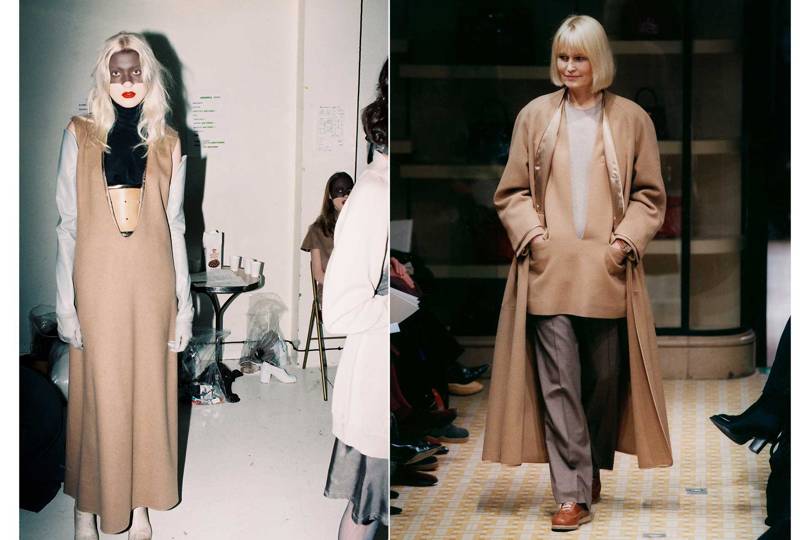 Plunging "Vareuse" necklines at Martin Margiela's Autumn/Winter 1996 collection (left) and a Margiela collection for Hermès, Autumn/Winter 1998 (right) Anders Edstrom (left); Studio des Fleurs (right) Some of Margiela’s Hermès pieces look almost like haute couture, for example coats with a semi-transparent silk cover flowing over fine wool for protection. Other offerings have the bizarre Margiela touch, as in a “glove story” using nothing but un-matched pairs to construct a slender dress. In a similar way, the designer used a collection of engagement rings worked in thread to make a silvered gown. Margiela never speaks publicly. But having talked to him at length when the exhibition was first presented at MoMu in 2017, I still had vivid memories of what he said – especially when he told me that he wanted to show work that had languished for years in cold storage at Hermès. “The memory was lost,” Margiela told me, explaining that his two decades of creation from 1989-2009 just missed the smartphone and the Internet era. Now that there are two ways to look at the designer’s work: at MAD for his Hermès period, and at the Palais Galliera for 20 years of his own creations, I have to ask the question: will the real Martin Margiela please stand up? And I am not even starting to think about the fact that John Galliano has now taken over at Maison Margiela, playing with the same issues of plastic, at its most fantastic, and the entire subject of what lies beneath those sheltering clothes. The story of Margiela’s Hermès is easy to define. It is about a modern elegance, de-sexualised, with a fresh take on traditional French style. “Fluid is a word we often used – it had to hang off the body,” Margiela told me. And the effect of oversize, which he started around 2000, is evident in his own work. Critics of the time felt that Margiela could and should have grown Hermès faster and further. During his tenure, he took the iconic Hermès’ hand-rolled scarfs and used that technique to edge blouses and tunics. He also played artfully with logos and identity, creating in 1997 a way of button stitching that produced the subtle “H” motif. Yet he never experimented with the famous Hermès patterns on headscarves and neckties, although the exhibition shows examples of work for his own label, when he played with hand printing and used it on legs and arms to extend the patterned effect. Spread over a generous space, the MAD exhibition includes short films of the Martin Margiela shows – including the famous 1990 presentation held on scrubland on the outskirts of Paris, where local kids joined the parade. Only just after he had left his job working for Jean Paul Gaultier in 1987, Margiela already showed symbols of his personal style. Clothes apparently worn inside-out and his early use of transparent plastic were in stark contrast to the glamorous style of the over-the-top 1980s. Margiela was clearly forging his own fashion path – a full seven years before he started designing for Hermès. Kaat Debo, Director of MoMu, who was instrumental in the original exhibition, rejoiced in its move to Paris. “I am proud and very thrilled to have this show in Paris, fashion’s world capital,” she said. “It’s an honour to have Martin’s oeuvre here. I really think he deserves it. And for us at the museum, it is always a joy to travel and see it in a different place and different context.” “But If you really want to understand Martin, you have to see both shows,” Kaat Debo continued. “At Galliera, there is an excellent overview of his own brand. And here at MAD, we see how he translates his DNA for another house.”  Martin Margiela Spring/Summer 1998 on the catwalk (left), and on display at the Palais Galliera (right) Getty The second exhibition, “Margiela/Galliera 1989-2009” (at the Palais Galliera until 15th July 2018) is unique – and not because his name is scribbled in ink at the entrance to the grand building. It is rather the words printed on the exhibition pamphlet: “Artistic Director Martin Margiela”, it reads, above the name of Alexandre Samson, the Director of Contemporary Collections. 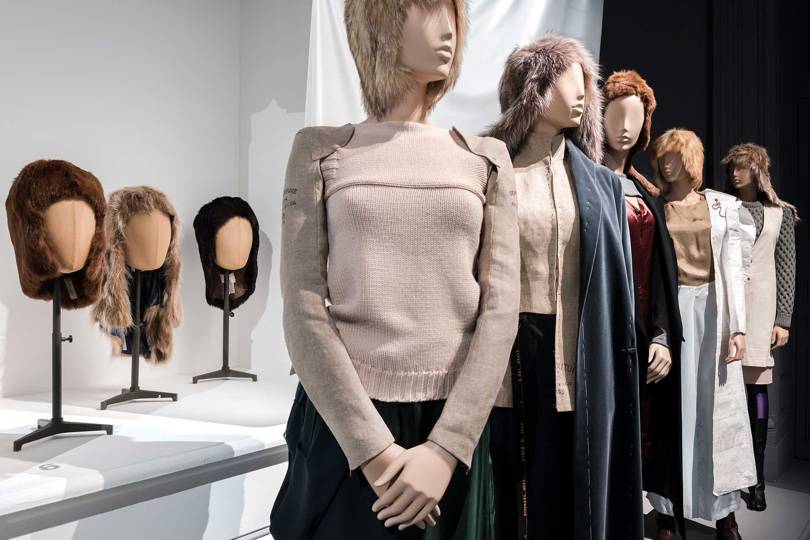 An installation of Martin Margiela's Autumn/Winter 1997 collection at the exhibition "Margiela/Galliera" at the Palais Galliera in Paris Pierre Antoine In an exceptional collaboration, Margiela was in a position to write his own history – or rather to show how he developed his fashion aesthetic in direct contrast to the extravagant 1980s, when he started his career working with Jean Paul Gaultier. From his early training at the fashion school of the Royal Academy of Fine Arts in Antwerp, he used his knowledge to deconstruct garments, revealing the hidden sewing skills behind linings, stitching and shoulder pads. He even had his own mother knit an openwork sweater using broom sticks; adapted dolls’ clothes to create giant Barbies; and produced oversize clothes so enormous that they were twice the normal shape.  An installation of Martin Margiela's Spring/Summer 2009 collection at the Palais Galliera (left); the look on the catwalk (right) Palais Galliera (left); Getty (right) “He never used the word ‘recycling’ – it was giving life to pieces he liked, and he loved vintage,” Samson said. “We chose the silhouettes together to make the collection he loves.”  A look from Martin Margiela's Spring/Summer 1993 collection Getty 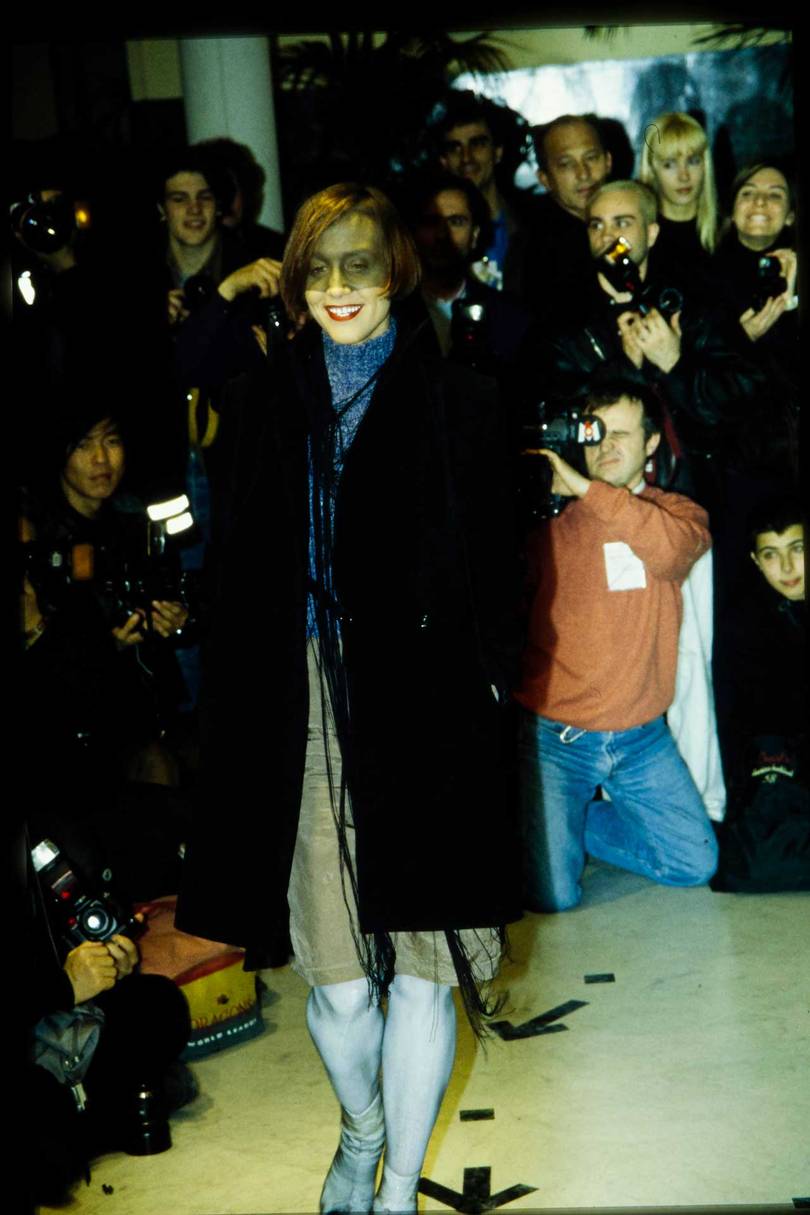 A model in a deconstructed coat and Tabi boots at a Martin Margiela show, Autumn/Winter 1996 Getty That included a huge American mannequin from 1936, which Margiela used as the foundation of his oversize collection. Other original moments in the 1990s included the artisanal dress made from four separate 1940s outfits, and for Autumn/Winter 1994 when he selected five groups of garments to show in shop windows in France, Japan and New York. A later elaboration in the new millennium was to have two trench coats assembled to have four sleeves. Having attended all the Margiela shows in the weirdest places – one in a ghostly, abandoned underground Paris metro station, where I never managed to open the entrance door, and nearly missed the show – I have many memories and an understanding of what made the designer so utterly original. 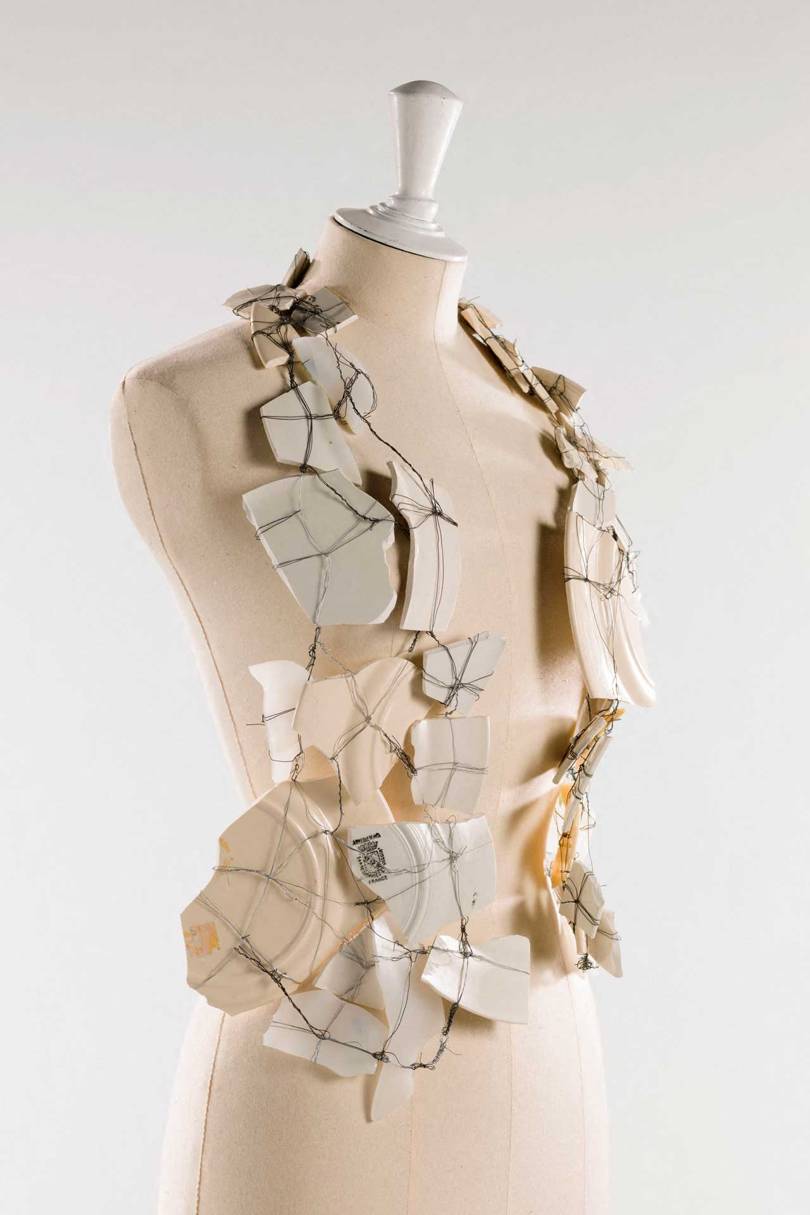 A porcelain gilet from Martin Margiela's Autumn/Winter 1989 collection Palais Galliera Margiela took us to extraordinary venues, from under an ephemeral cover in the wasteland on the outskirts of Paris to a Salvation Army depot. In 1992, the “set” was not one, but two divided areas; one where everything was shown in white, the other in black. The passion with which Margiela’s followers collected his clothes is shown at the Palais Galliera in reconstructions of the compact apartments of Japanese fans who dedicated their small living spaces to their idol. Looking at the exhibition leaves the impression that Margiela pioneered great things. In 1999 he made an entire collection out of old duvets – anticipating by a decade the fashion for padded puffer coats. His oversize outfits appeared just at the fashion moment devoted to skimpy, body clinging outfits. Olivier Saillard, the former director of the Palais Galliera, was the instigator of the exhibition back in 2017, when, he says, an interest in Margiela had blossomed again because of the work of Demna Gvasalia, another alumnus of the Antwerp school, who led the design team at Maison Margiela before launching anti-fashion brand Vetements and then designing for Balenciaga.  An installation of Martin Margiela's Autumn/Winter 2000 collection at the Palais Galliera in Paris Pierre Antoine “When I met Margiela, the idea was to do an exhibition through an exhibition – showing the clothes from each collection as a personal and fashion retrospective,” Saillard explained, saying that the only designer who had shown the same passion for a museum show was the late Azzedine Alaïa. And from Saillard, a final wise comment, as we looked at Margiela dresses cut horizontally, instead of vertically: “Young people coming here should understand that not being able to create new fashion is not about a lack of money – but of imagination.” (责任编辑:admin) |
